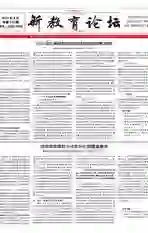Embrace the flat design style
2019-09-10李晨莹
李晨莹
The famous artist Edgar Degas once said that art is not what you see, but what you let others see what you see. Graphic design can adjust the viewer's mood and feeling by adjusting the shape, shadow, font strokes and letter spacing. At this point, it is common to art. As a general trend of current design, the flat design certainly has the same characteristics.
The development of flat design is of course traceable, and its roots are often traced back to a decorative design style called "Swiss style". The Swiss Modernist movement of the early 20th century gave birth to this design style. With the end of World War II, this design style began to spread in Europe and won more crowds. The design style revolution was led by Josef Müller-Brockmann of the Zurich School of Art and Technology and Armin Hofmann of the Basel School of Design. In Design is History, the Swedish style is described as follows: "This style emphasizes simplicity, readability and objectivity. The two design institutes contributed a lot to this style, including non-serif fonts, Grid and asymmetrical layout. This design style also emphasizes the use of typography and photography as the main means of visual communication. Therefore, the most influential works in Swiss style are usually presented in the form of posters. This is the most effective means of communication."
Today's flat design is not a simple style, but a collection of designs that cover many common styles and have many different goals or tasks. At present, flat design is widely used in the field of digital design, and often combined with simple or minimal visual expression. Due to the evolution of mobile design style, flat design is often regarded as the opposite of pseudo-materialized design. The flat design has experienced positive and rapid development in the past few years and is currently "invading"more and more areas of graphic design.
With the development of technology and the needs of users, the use of flat design styles has become more and more widespread. More and more UIs have begun to adopt flat style illustrations. Illustrators will present a kind of fun and diversified in web pages. Visual effects, micro-animation, hand-drawn fonts, etc. can all be represented in the form of hand-drawn illustrations, creating a unique visual experience that is clearly customizable and targeted, with clear business goals and perspectives, and can be more In order to effectively solve the user's pain points. Some of the thematically strong flat illustrations meet the user's aesthetic needs, while also having the ability to point questions.
Flat design has become the mainstream design direction in webpage and UI design. The flat design is used in UI design, which brings users a more concise, efficient and comfortable use experience. This function is embodied in flat design. The simple elements, the decoration, the simplest style and the search for features, words and colors in the commonality. Although seemingly simple, minimalism is actually very difficult to do. Using fewer elements means you have to express more content with the elements you have. Therefore, the most important thing is to decide what needs to be retained.
The essence of flat design is that it pays more attention to the use of clean lines and more 2D styles, which is easier for supporters to understand and use. The flat design also focuses on high-contrast color and typographically focused elements rather than a large number of images. Usually, a single image or illustration can drive the entire homepage with a flat design, which facilitates user interface interaction understanding, creates a flat functional design, and even can be said to be an indispensable part of our daily life, and begins It affects the daily decision-making in our lives, and has the potential to solve various problems. It opens up new perspectives, has unique advantages, and is favored by everyone. But like modernist design and Bauhaus, flat design has its own flaws and insurmountable problems, don't over-superstition.
Design style will always be relative, but not absolute. They are interdependent and contrasting each other to form each other. Everyone has different aesthetics, and what we have to learn in real life is not how to persuade everyone to like the design style they like, but to understand each other and eventually achieve mutual acceptance. In other words, no design style is "ugly." Before we want to say someone else's work "ugly", we should think about it from his perspective, and appreciate it from another aesthetic – perhaps, we can find another beauty.
